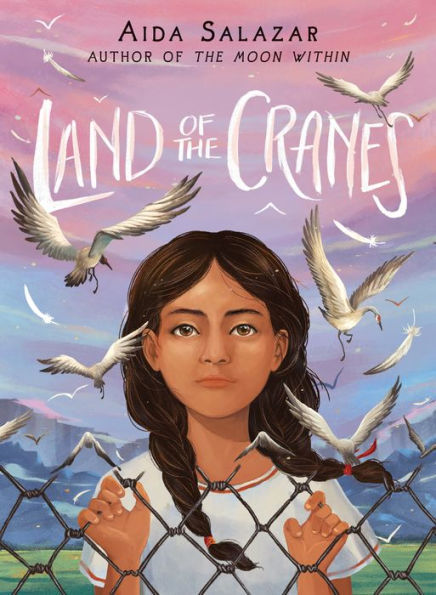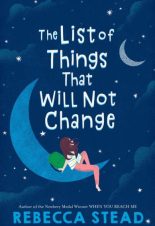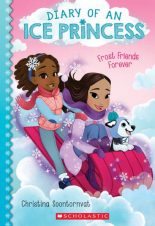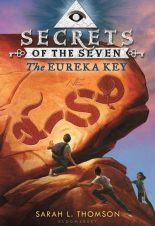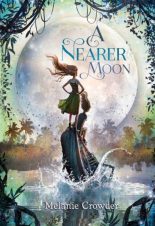Land of the Cranes
by Aida Salazar
AR Test
8+
Score
5.5
256
Nine-year-old Betita knows she is a crane. Papi has told her the story, from even before her family fled to Los Angeles to seek refuge from cartel wars in Mexico. Long before that, Aztecs came from a place called Aztlan, which is now the Southwest U.S. This place was called the land of the cranes. The Axtecs left Aztlan to establish their great city in the center of the universe -Tenochtitlan, modern-day Mexico City. But it was prophesied that their people would one day return to live among the cranes in their promised land. Papi tells Betita they are cranes that have come home.
Then one day, Betita’s beloved father is arrested by Immigration Customs Enforcement (ICE) and deported to Mexico. Betita and her pregnant mother are left behind, but soon they too are detained and must learn to survive in a family detention camp outside of Los Angeles. Even in cruel and inhumane conditions, Betita finds heart in her own poetry and in the community, she and her mother find in the camp. The voices of her fellow asylum seekers fly above the hatred keeping them caged, but each day threatens to tear them down lower than they ever thought they could be torn. Will Betita and her family ever be whole again?
Land of the Cranes is told from Betita’s point of view. Her voice comes through in the narration and in the poems she writes for her father. She also draws simple illustrations that help convey her emotions. Even though the story is told from a child’s point of view, younger readers may be upset by the harsh treatment and a brief description of sexual abuse.
Written in prose, Land of the Cranes has some beautiful language. However, Spanish words and phrases are scattered throughout the book, which may cause confusion for non-Spanish speakers. In an extended metaphor, Betita refers to her and her family as cranes. Expanding on this metaphor, when she thinks about her mother’s pregnancy Betita talks about the “egg” and the “nest.” One reason Betita is worried about the “egg hatching” is that “Mami has lost / two babies before. / They worry that this one / might get lost too.”
Land of the Cranes explores the “zero tolerance” policy of ICE detaining undocumented immigrants and the harsh condition of the detention centers. One of Salazar’s purposes for writing the book is to show an example of “a larger, tragic, and true story of the criminalization of migration that spans hundreds of years.”
Younger readers may be disturbed by Land of the Cranes because it deals with the difficult topic of immigration and families being torn apart. In addition, readers may have a difficult time understanding some of the language and when Spanish is used, there are not always context clues to help readers understand the words’ meanings. Despite this, Land of the Cranes would be an excellent book to use as a conversation starter. Sensitive readers may want to skip Land of the Cranes and read Efren Divided, which explores the same topics but uses a more child-friendly manner.
Sexual Content
- A young woman has a girlfriend.
- Betita’s friend tells her a secret. “There was a man who cooked our food / who would lock me in the closet with him. / He did things. / He told me it was supposed to feel good / but it didn’t. It hurt so bad, I threw up.”
Violence
- Betita’s Tio, Pedro, was killed by a cartel. Papi says, “A cartel hurt Tio Pedro / made him disappear / when he didn’t give them / the money they wanted.”
- A woman in the detention center explains why her family fled to America. She was fearful that the cartel would hurt her family. The woman saw the cartel “kill a man for not paying the rent on his cart. I knew we would be next.”
- A woman guard tells Betita to undress. Betita stomps “my feet on her foot . . . The guard grabs me by the arm / shakes my body like a sheet /and starts to pull up my blouse.” The guard tries to “hit Mami,” but another guard stops her.
- A young woman tries to fight the guards, who are putting her in a cell. “They get her up and open the / gate to our cell, and give her a shove. . . She lunges at one of the guards. / The guard’s fist smashed into her nose / which sends her back like a rag doll. / Then the other guard rushes her / while she is down / and kicks / and kicks/ and kicks/ her in the stomach / and in the face.”
- Betita’s friend was taken to a detention camp for children. Her friend says the guards “hit the kids / who tried to run out of the doors or cried too loudly.”
- While sleeping, a guard checks on the prisoners. “I count one kick in my face / while I slept, from a guard.”
Drugs and Alcohol
- At a quinceanera, “Tio Desiderio is on guard / at the bar, making sure some /of her pimply-faced guy friends / don’t try to get beer.”
- Papi tells Betita that a cartel is “a group of men who sell / drugs / guns / and people / sometimes.”
Language
- Several of the guards at the detention center call the prisoners “donkeys.” For example, a guard yells, “Burros, time to eat!”
- The guards call the prisoners names including wetback, perra, and stupid.
- Betita doesn’t like her friend’s “booger of a brother.”
- When a guard pushes a prisoner, the prisoner yells, “Don’t push me, you piece of scum!”
- Dang is used twice.
- Freaking and damn are both used one time.
Supernatural
- None
Spiritual Content
- Betita’s mother thinks about her brother, who was killed by the cartel. “Mami lights a candle daily / to a small statue of La Vigen de Guadalupe / and a picture of Tio Pedro faded in the frame. . . She prays for protection under her breath.”
- When her father is deported, Betita cuts a piece of her father’s pillow and “put it on Mami’s Virgencita / smoosh it between the moon / and the angel / and pray for protection. ‘Please, Virgencita, don’t / take Papi with you too.’”
- When Betita and her mother are taken to a detention center, “Mami prays Tio Juan / will reach Fernanda and that she will / know where to find us. . . Virgencita, protect us, por favor, Mami says.”
- Betita tells the story about how the Mexican people are cranes. “Several tribes including the Mexica / traveled south like cranes / when Huitzilopchitli. . .The god of war / announced his / prophecy that they /would move south / to build their great /civilization in the / ombligo of the world.”
“No matter how we struggle, remember to keep life sweet,” Papi. –Land of the Cranes
Latest Reviews

Grace Hopper: Queen of Computer Code

Girls Who Code: Learn to Code and Change the World

Alone

Friends Fur-Ever

Harry Houdini: A Magical Life

The Greedy Gremlin

Hoop Genius: How a Desperate Teacher and a Rowdy Gym Class Invented Basketball

Our Violent Ends

Healer of the Water Monster

